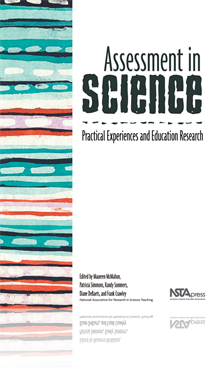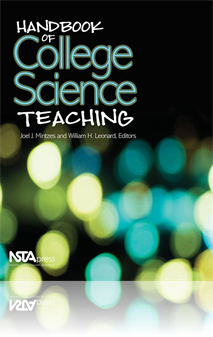All Book Chapters
Book Chapter
A fossil is any evidence of an ancient organism. The remains of the body, such as bones, shells, leaf impressions, etc., are called body fossils. The evidence of animal activity, such as tracks, trails, and burrows, are called trace fossils. This cha...
Book Chapter
What Can You Learn From Fossils?
At one point or another, it seems like all students are interested in paleontology. Wonderful extinct animals like dinosaurs excite the imagination like almost nothing else. Once you have the students' interest, you will find that a study of paleon...
Book Chapter
Mass Extinction and Meteor Collisions With Earth
Paleontologists divide extinctions into two broad categories—background extinctions and mass extinctions. Background extinctions occur continuously while mass extinctions are unusual in that they involve very large numbers of species, of very diffe...
Book Chapter
How Are Fossils Collected and Prepared?
This chapter describes some ways that fossils are found and prepared and guides the reader though the steps of preparing real fossil specimens. Three activities are presented that focus on specific fossil collection and preparation techniques. Activi...
Book Chapter
How Can You Tell the Age of Earth?
In the activity in this chapter, a table of measurements is presented that can be used to construct a model of the age of Earth and some of the most important events in its history. The models are constructed out of a variety of materials—wooden bl...
Book Chapter
This chapter explores the methods of cladistics and facilitates an understanding of evolution through active learning. Four activities are presented that address the methods of tracing evolution in fossils and give examples of two well-documented evo...
Book Chapter
Diversity, Classification, and Taxonomy
This chapter places fossils in the contexts of their distribution on the globe and how we name them and quantify their communities. The activities analyze how diversity is measured, how dinosaurs are classified, and their distribution in time and spa...
Book Chapter
This chapter looks at fossils from a humanistic perspective. Fossil fuels—coal, oil, and natural gas—make up over 80% of our energy sources. They are called fossil fuels because they all come from ancient organic matter that has been buried and t...
Book Chapter
Whenever a fossil is beautiful, appealing, or is more than of ordinary significance, it may be called art. The first activity in this chapter challenges students to submit an entry on dinosaurs to a campus art contest for an outdoor art display. The ...
Book Chapter
A Knowledge-Based Framework for the Classroom Assessment of Student Science Understanding
Recent research in cognitive science linked with established principles of educational assessment provide a framework that science teachers and researchers can use to assess student understanding of science. Knowledge-based categories for assessing s...
Book Chapter
Evolving Ideas: Assessment in an Evolution Course
As science instruction moves from lectures that emphasize lists of facts to more student-centered approaches that emphasize knowledge generation and justification, it is clear that assessments must also change. The assessment instruments developed fo...
Book Chapter
Integrating an Assessment Plan Into A K—12/ University Engineering Partnership
A comprehensive assessment plan is a valuable component of a university’s K—12 outreach effort. The K—12 Engineering Outreach Initiative has integrated an assessment plan into each stage of its outreach—development, implementation, and sustai...
Book Chapter
Varying Instructional Methods and Assessment of Students in High School Chemistry
New content standards call for the implementation of new and varied pedagogical interventions and instructional techniques. An experimental project in which chemistry was taught using new pedagogical and assessment standards with 10th- to 12th-grade ...
Book Chapter
Performance Assessment Tasks as a Stimulus for Collaboration Among Preservice and Inservice Teachers
The Performance Assessment project was a collaboration initiated by a university team of instructors and a local school district in which inservice and preservice teachers developed and implemented science performance assessment tasks during a one-se...
Book Chapter
Assessment in Support of Contextually Authentic Inquiry
If research into the assessment of science learning is going to make a difference for teachers, it must be applicable to the realities of K—12 classrooms. This research study conducted in urban elementary schools focused on how students and teacher...
Book Chapter
Helping Students Understand the Minds-On Side of Learning Science
This collaboration between a fourth-grade teacher and university researcher resulted in the development of the Cognitive Strategies Inventory, an assessment instrument targeting writing, discussing, computing, reading, public speaking, and problem so...
Book Chapter
Revised Views of Classroom Assessment
The Classroom Assessment Project to Improve Teaching and Learning (CAPITAL), a collaborative research initiative between Stanford University and middle school science teachers in nearby school districts, examined classroom-based assessment in science...
Book Chapter
Moving Beyond Grades and Scores: Reconsidering Assessment Feedback
Many teachers are concerned about providing feedback to students in ways that support student learning. Five middle school teachers, part of the Classroom Assessment Project to Improve Teaching and Learning (CAPITAL), explored classroom-based assessm...
Book Chapter
Mind Mapping as a Flexible Assessment Tool
Mind mapping, a visual tool to improve note taking, foster creativity, organize thinking, and develop ideas and concepts, was the focus of this research project with middle school students. The efficacy of mind mapping as a teaching, learning, and as...
Book Chapter
Developing Assessment Items: A How-to Guide
Many current high-stakes accountability measures take the form of traditional test items. While traditional forms of assessment may not be the best method to assess all important skills and knowledge, teachers should learn how to construct these kind...
Book Chapter
Assessment in Support of Conceptual Understanding and Student Motivation to Learn Science
Classroom-based assessment strategies may influence the development of conceptual understanding and motivational beliefs among elementary learners in science. A contextual analysis of how young children (65 second graders) responded to classroom-base...
Book Chapter
“Adaptive inquiry” is the product of the synergistic relationship between what a student brings to the classroom, the teacher’s ability to shape a lesson in response to the needs of the student, and the method of final assessment. This new form...
Book Chapter
Science Standards Influence Classroom Assessment Practices
School districts and individual schools must place a premium on linking classroom instruction, science content standards, and classroom assessment. In this study, the authors examined the influence of national science standards on middle school scien...
Book Chapter
Usable Assessments for Teaching Science Content and Inquiry Standards
This chapter reports on an approach to developing middle school science assessments using a learning-goals-driven design model. The design process for creating usable assessments that are aligned with curriculum and important science content and inqu...
Book Chapter
Using Rubrics to Foster Meaningful Learning
Since its inception in the mid-1980s, the Science Education for Public Understanding Program (SEPUP) at the Lawrence Hall of Science (University of California-Berkley) has developed an array of “issue-oriented” instructional and assessment materi...
Book Chapter
Professional Development and Teacher Learning: Using Concept Maps in Inquiry Classrooms
Two urban middle school science teachers used concept maps as a form of assessment in their inquiry-oriented teaching. Critical steps in this learning process included adapting curriculum materials to a specific school context, adjusting and re-evalu...
Book Chapter
Coming to See the Invisible: Assessing Understanding in an Inquiry-Focused Science Classroom
The work discussed here focused on the design of curricula that mirrored important aspects of realistic scientific practice, especially the ways in which causal models are used to account for patterns in data and the use of criteria for judging the a...
Book Chapter
Science Anxiety: Research and Action
Science anxiety has been shown to seriously impede student learning. This chapter will describe research done on science anxiety and will explain specific actions that college science teachers can take to build the confidence of their students. This ...
Book Chapter
New Physics Teaching and Assessment: Laboratory- and Technology-Enhanced Active Learning
For more than half a decade, two universities—North Carolina State University (NCSU) and Massachusetts Institute of Technology—have been engaged in reforming their introductory physics courses. This chapter describes the instructional objectives ...
Book Chapter
Developing Scientific Reasoning Patterns in College Biology
A long-held and central objective of science instruction is to help students develop scientific reasoning patterns. During the past few decades, considerable research has been undertaken to identify the nature of scientific reasoning patterns, their ...
Book Chapter
Learning Science and the Science of Learning
In 1988, at the invitation of the journal editors, the author published an article by the same title as this chapter in the journal, Studies in Science Education. This chapter summarizes some of the key points made in that article, presents some more...
Book Chapter
The Impact of a Conceptually Sequenced Genetics Unit in an Introductory College Biology Course
In this chapter, the authors describe how they revised the genetics section of an introductory biology course to reflect current knowledge of learning theory and conceptual change. A sequence and associated experiences were developed that would cente...
Book Chapter
Do Introductory Science Courses Select for Effort or Aptitude?
On the first day of classes, students in introductory biology courses believe that effort is the most accurate predictor of their academic success. Students know which academic behaviors are important for success, and they are confident that they wil...
Book Chapter
Active Learning in the College Science Classroom
Research has consistently shown that all students, including college science students, learn more when activity engaged. Engagement can occur through increased interaction with the content itself, or it may be coupled with increased interaction with ...
Book Chapter
Incorporating Primary Literature Into Science Learning
Recent educational initiatives call for changes in science education that promote the development of students’ scientific skills, such as interpreting data, applying concepts, and synthesizing information. Although these initiatives do not explicit...
Book Chapter
Fieldwork: New Directions and Exemplars in Informal Science Education Research
Fieldwork can teach our students that although controlled experiments are one route to scientific knowledge, they are by no means the only route (McComas 1996). In this chapter the authors have selected a small set of field-based geology education an...
Book Chapter
Using Case Studies to Teach Science
Storytelling as a formal educational device arguably entered the didactic scene about 100 years ago with case study teaching at Harvard (Herreid 1994). There in the law and business schools, instructors and students analyzed realistic stories as exem...
Book Chapter
Poetry writing is a simple yet effective way to encourage the development of cross-disciplinary connections, creativity, and critical thinking in science students. In other words, by mating ideas and methods from scientists like Charles Darwin with t...
Book Chapter
Improving Student Attitudes Toward Biology
Osborne, Simon, and Collins (2003) found positive correlations between attitude and certain characteristics of the classroom environment, including student-centered instructional designs, high levels of personal support, use of a variety of teaching ...
Book Chapter
Constructive-Developmental Pedagogy in Chemistry
This chapter reflects on research in constructive-developmental (CD) pedagogy having application to today’s undergraduate science classroom. Its focus is on the undergraduate chemistry curriculum and pedagogy. The author explores the extent to whic...





